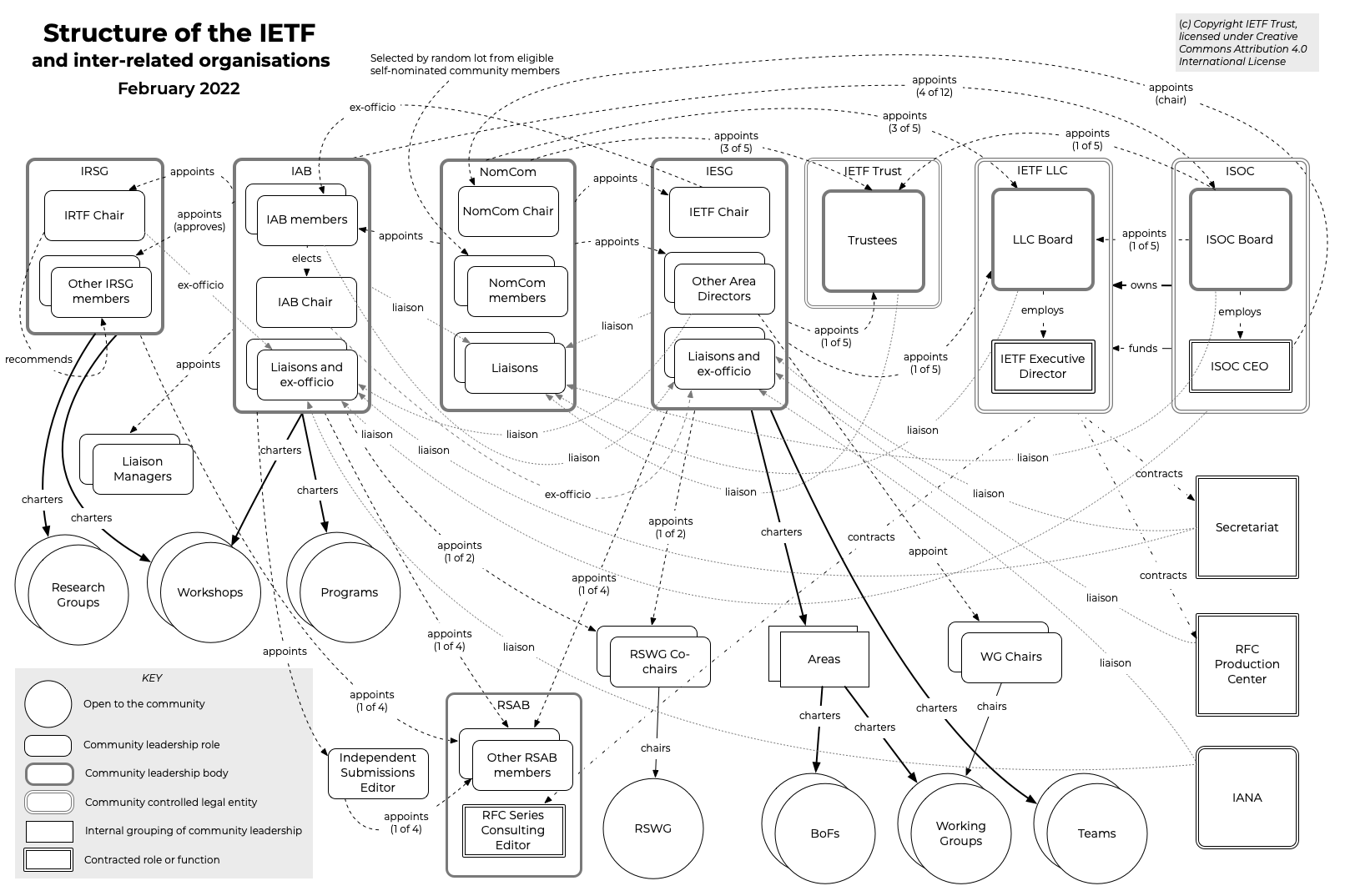|
Yakov Rekhter
Yakov Rekhter is a well-known network protocol designer and software programmer. He was heavily involved in internet protocol development, and its predecessors, from their early stages. Dr. Rekhter was one of the leading architects and a major software developer of the NSFNET Backbone Phase II. He co-designed the Border Gateway Protocol (BGP), the core routing protocol of the Internet. He was also one of the lead designers of Tag Switching (of which MPLS is one form), BGP/MPLS based VPNs, and MPLS Traffic Engineering. Among his most recent activities is the work on MPLS Multicast, Multicast in VPLS, and Multicast in BGP/MPLS VPNs (aka 2547 VPNs). His other contributions to contemporary Internet technology include: GMPLS, Classless Inter-Domain Routing (CIDR) and IP address allocation for private Internets. He is the author or co-author of more than 80 IETF RFCs, and numerous papers and articles on TCP/IP and the Internet. His recent books include: ''MPLS: Technology and Applic ... [...More Info...] [...Related Items...] OR: [Wikipedia] [Google] [Baidu] [Amazon] |
NSFNET
The National Science Foundation Network (NSFNET) was a program of coordinated, evolving projects sponsored by the National Science Foundation (NSF) from 1985 to 1995 to promote advanced research and education networking in the United States. The program created several nationwide backbone computer networks in support of these initiatives. It was created to link researchers to the NSF-funded supercomputing centers. Later, with additional public funding and also with private industry partnerships, the network developed into a major part of the Internet backbone. The National Science Foundation permitted only government agencies and universities to use the network until 1989 when the first commercial Internet service provider emerged. By 1991, the NSF removed access restrictions and the commercial ISP business grew rapidly. History Following the deployment of the Computer Science Network (CSNET), a network that provided Internet services to academic computer science departments, ... [...More Info...] [...Related Items...] OR: [Wikipedia] [Google] [Baidu] [Amazon] |
Border Gateway Protocol
Border Gateway Protocol (BGP) is a standardized exterior gateway protocol designed to exchange routing and reachability information among autonomous systems (AS) on the Internet. BGP is classified as a path-vector routing protocol, and it makes routing decisions based on paths, network policies, or rule-sets configured by a network administrator. BGP used for routing within an autonomous system is called Interior Border Gateway Protocol (iBGP). In contrast, the Internet application of the protocol is called Exterior Border Gateway Protocol (EBGP). History The genesis of BGP was in 1989 when Kirk Lougheed, Len Bosack and Yakov Rekhter were sharing a meal at an IETF conference. They famously sketched the outline of their new routing protocol on the back of some napkins, hence often referenced to as the “Two Napkin Protocol”. It was first described in 1989 in RFC 1105, and has been in use on the Internet since 1994. IPv6 BGP was first defined in in 1994, and it wa ... [...More Info...] [...Related Items...] OR: [Wikipedia] [Google] [Baidu] [Amazon] |
MPLS
Multiprotocol Label Switching (MPLS) is a routing technique in telecommunications networks that directs data from one node to the next based on labels rather than network addresses. Whereas network addresses identify endpoints, the labels identify established paths between endpoints. MPLS can encapsulate packets of various network protocols, hence the ''multiprotocol'' component of the name. MPLS supports a range of access technologies, including T1/ E1, ATM, Frame Relay, and DSL. Role and functioning In an MPLS network, labels are assigned to data packets. Packet-forwarding decisions are made solely on the contents of this label, without the need to examine the packet itself. This allows one to create end-to-end circuits across any type of transport medium, using any protocol. The primary benefit is to eliminate dependence on a particular OSI model data link layer (layer 2) technology, and eliminate the need for multiple layer-2 networks to satisfy different types of traffic. ... [...More Info...] [...Related Items...] OR: [Wikipedia] [Google] [Baidu] [Amazon] |
VPLS
Virtual Private LAN Service (VPLS) is a way to provide Ethernet-based multipoint to multipoint communication over IP or MPLS networks. It allows geographically dispersed sites to share an Ethernet broadcast domain by connecting sites through pseudowires. The term ''sites'' includes multiplicities of both servers and clients. The technologies that can be used as pseudo-wire can be Ethernet over MPLS, L2TPv3 or even GRE. There are two IETF standards-track RFCs (RFC 4761 and RFC 4762) describing VPLS establishment. VPLS is a virtual private network (VPN) technology. In contrast to L2TPv3, which allows only point-to-point layer 2 tunnels, VPLS allows any-to-any (multipoint) connectivity. In a VPLS, the local area network (LAN) at each site is extended to the edge of the provider network. The provider network then emulates a switch or bridge to connect all of the customer LANs to create a single bridged LAN. VPLS is designed for applications that require multipoint or broadcas ... [...More Info...] [...Related Items...] OR: [Wikipedia] [Google] [Baidu] [Amazon] |
GMPLS
Generalized Multi-Protocol Label Switching (GMPLS) is a protocol suite extending MPLS Multiprotocol Label Switching (MPLS) is a routing technique in telecommunications networks that directs data from one node to the next based on labels rather than network addresses. Whereas network addresses identify endpoints, the labels identi ... to manage further classes of interfaces and switching technologies other than packet interfaces and switching, such as time-division multiplexing, layer-2 switching, wavelength switching and fiber-switching. Differences between MPLS and GMPLS Generalized MPLS differs from traditional MPLS in that it extends support to multiple types of switching such as TDM, wavelength and fiber (port) switching. For instance, GMPLS is the '' de facto'' control plane of wavelength switched optical network (WSON). The support for the additional types of switching has driven GMPLS to extend certain base functions of traditional MPLS and, in some cases, to add functi ... [...More Info...] [...Related Items...] OR: [Wikipedia] [Google] [Baidu] [Amazon] |
Classless Inter-Domain Routing
Classless Inter-Domain Routing (CIDR ) is a method for allocating IP addresses for IP routing. The Internet Engineering Task Force introduced CIDR in 1993 to replace the previous classful network addressing architecture on the Internet. Its goal was to slow the growth of routing tables on routers across the Internet, and to help slow the rapid exhaustion of IPv4 addresses. IP addresses are described as consisting of two groups of bits in the address: the most significant bits are the network prefix, which identifies a whole network or subnet, and the least significant set forms the ''host identifier'', which specifies a particular interface of a host on that network. This division is used as the basis of traffic routing between IP networks and for address allocation policies. Whereas classful network design for IPv4 sized the network prefix as one or more 8-bit groups, resulting in the blocks of Class A, B, or C addresses, under CIDR address space is allocated to Internet ... [...More Info...] [...Related Items...] OR: [Wikipedia] [Google] [Baidu] [Amazon] |
Private Network
In Internet networking, a private network is a computer network that uses a private address space of IP addresses. These addresses are commonly used for local area networks (LANs) in residential, office, and enterprise environments. Both the IPv4 and the IPv6 specifications define private IP address ranges. Most Internet service providers (ISPs) allocate only a single publicly routable IPv4 address to each residential customer, but many homes have more than one computer, smartphone, or other Internet-connected device. In this situation, a network address translator (NAT/PAT) gateway is usually used to provide Internet connectivity to multiple hosts. Private addresses are also commonly used in corporate networks which, for security reasons, are not connected directly to the Internet. Often a proxy, SOCKS gateway, or similar devices are used to provide restricted Internet access to network-internal users. Private network addresses are not allocated to any specific organizati ... [...More Info...] [...Related Items...] OR: [Wikipedia] [Google] [Baidu] [Amazon] |
Internet Engineering Task Force
The Internet Engineering Task Force (IETF) is a standards organization for the Internet standard, Internet and is responsible for the technical standards that make up the Internet protocol suite (TCP/IP). It has no formal membership roster or requirements and all its participants are volunteers. Their work is usually funded by employers or other sponsors. The IETF was initially supported by the federal government of the United States but since 1993 has operated under the auspices of the Internet Society, a non-profit organization with local chapters around the world. Organization There is no membership in the IETF. Anyone can participate by signing up to a working group mailing list, or registering for an IETF meeting. The IETF operates in a bottom-up task creation mode, largely driven by working groups. Each working group normally has appointed two co-chairs (occasionally three); a charter that describes its focus; and what it is expected to produce, and when. It is open ... [...More Info...] [...Related Items...] OR: [Wikipedia] [Google] [Baidu] [Amazon] |
Juniper Networks
Juniper Networks, Inc. is an American multinational corporation headquartered in Sunnyvale, California. The company develops and markets networking products, including Router (computing), routers, Network switch, switches, network management software, network security products, and software-defined networking technology. The company was founded in 1996 by Pradeep Sindhu, with Scott Kriens as the first CEO, who remained until September 2008. Kriens has been credited with much of Juniper's early market success. It received several rounds of funding from venture capitalists and telecommunications companies before Initial public offering, going public in 1999. Juniper grew to $673 million in annual revenues by 2000. By 2001 it had a 37% share of the core routers market, challenging Cisco Systems, Cisco's once-dominant market-share. It grew to US$4 billion in revenues by 2004 and $4.63 billion in 2014. Juniper appointed Kevin Johnson (executive), Kevin Johnson as CEO in 2008, Shaygan ... [...More Info...] [...Related Items...] OR: [Wikipedia] [Google] [Baidu] [Amazon] |
Cisco Systems
Cisco Systems, Inc. (using the trademark Cisco) is an American multinational corporation, multinational digital communications technology conglomerate (company), conglomerate corporation headquartered in San Jose, California. Cisco develops, manufactures, and sells networking hardware, software, telecommunications equipment and other high-technology services and products. Cisco specializes in specific tech markets, such as the Internet of things (IoT), internet domain, domain security, videoconferencing, and energy management with List of Cisco products, products including Webex, OpenDNS, XMPP, Jabber, Duo Security, Silicon One, and Cisco Jasper, Jasper. Cisco Systems was founded in December 1984 by Leonard Bosack and Sandy Lerner, two Stanford University computer scientists who had been instrumental in connecting computers at Stanford. They pioneered the concept of a local area network (LAN) being used to connect distant computers over a multiprotocol router (computing), route ... [...More Info...] [...Related Items...] OR: [Wikipedia] [Google] [Baidu] [Amazon] |
IBM T
International Business Machines Corporation (using the trademark IBM), nicknamed Big Blue, is an American multinational technology company headquartered in Armonk, New York, and present in over 175 countries. It is a publicly traded company and one of the 30 companies in the Dow Jones Industrial Average. IBM is the largest industrial research organization in the world, with 19 research facilities across a dozen countries; for 29 consecutive years, from 1993 to 2021, it held the record for most annual U.S. patents generated by a business. IBM was founded in 1911 as the Computing-Tabulating-Recording Company (CTR), a holding company of manufacturers of record-keeping and measuring systems. It was renamed "International Business Machines" in 1924 and soon became the leading manufacturer of punch-card tabulating systems. During the 1960s and 1970s, the IBM mainframe, exemplified by the System/360 and its successors, was the world's dominant computing platform, with the company p ... [...More Info...] [...Related Items...] OR: [Wikipedia] [Google] [Baidu] [Amazon] |
Milpitas, California
Milpitas (Spanish for or little cornfields) is a city in Santa Clara County, California, part of Silicon Valley and the broader San Francisco Bay Area. Located on the eastern shore of San Francisco Bay, it is bordered by San Jose, California, San Jose to the south, Fremont, California, Fremont to the north, and the Coyote Creek (Santa Clara County), Coyote Creek and Calaveras Reservoir to the west. As of the 2020 United States census, 2020 census, the city population was 80,273. The city is located at the junction of Interstates Interstate 680 (California), 680 and Interstate 880 (California), 880 and is served by the Milpitas Transit Center, Milpitas BART station. Historically inhabited by the Ohlone people, the area served as a crossroads between Mission San José de Guadalupe in present-day Fremont and Mission Santa Clara de Asis in present-day Santa Clara. The city’s modern development began in the mid-20th century, driven by postwar suburbanization and its incorporation i ... [...More Info...] [...Related Items...] OR: [Wikipedia] [Google] [Baidu] [Amazon] |



